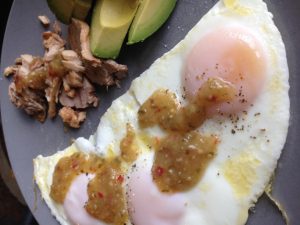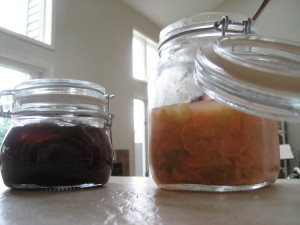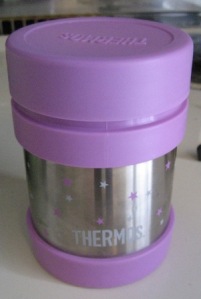Sally Satel, a psychiatrist and resident scholar at The Enterprise Institute, has written an article about a new study on the placebo effect.
The study, by the National Institutes of Health, surveyed practicing U.S. internists and rheumatologists about whether they prescribe placebos. It was published in the British Medical Journal. Half of the MDs surveyed say they prescribe placebos. More than two-thirds say they think prescribing placebos is an acceptable thing to do.
One way to “read” the study, of course, is that MDs are leading patients down the proverbial path. Prescribing sugar pills. But as Satel points out, the reality is a bit more complex:
[O]nly a handful of the almost 700 physicians who completed the survey claimed to use inert substances such as sugar pills or saline. The vast majority offered innocuous over-the-counter products, sometimes called “impure” placebos, such as vitamins or Tylenol, though 13% used antibiotics and another 13% used sedatives. By offering an actual pharmaceutical, doctors stand on firmer ground in telling patients that what they are prescribing is a medication whereas describing a sugar pill as medication is much harder, perhaps impossible, for most to justify as a matter of conscience.
The other important factor is that the research “targeted” internists and rheumatologists — whose patients, in Satel’s words, typically suffer from “chronic illnesses, such as fibromyalgia, that are notoriously refractory to care.”
In other words, these are docs who are unable to help a significant percentage of their patients.
So they’re “prescribing” vitamins or Tylenol or sedatives.
Satel then goes on to discuss the psychological implications of placebos: that even sugar pills bring short term relief if patients believe they’re therapeutic.
But (she notes) there’s a risk as well. If patients begin to feel they’ve been duped, their trust in their physicians, and in the medical profession itself, will be lost.
What Satel doesn’t say is that the loss of trust has already happened. Or is, at least, in the process of happening. Which is why so many people gravitate to alt medicine.
To tease it out a bit more, the most important element at play, here, is the doctor’s fallibility.
Imagine what it must be like to be an MD facing a patient you do not believe you can help.
This person wants to trust you; this person believes you are his only hope; he needs you to stop the hurting, to ward off Death, to restore him to the full and happy life he’s watched slip away.
And you can do nothing. You know you cannot help; you are stumped. There is no drug, no therapy that has shown to reliably erase this condition. Any that have shown promise, you’ve already tried, and they’ve failed. You are stumped. You know it, even if you don’t quite dare let that thought form in your mind as you sit there in the exam room, facing the poor wretch. There is nothing in your bag that will make things better, no wand you can wave.
But you can’t say it. If you say it, everything crumbles. Saying it means you admit your fallibility, it means you admit how tiny and precarious your understanding is, how close to you is the drop-off into the pitch-black gulf of your ignorance. To say it is to let your patient fall off into that gulf, both of you helpless to save him.
So instead you — the MD — reach for what is, in fact, your OWN placebo. In the lingo of the study, you reach for “[A] medicine not typically used for [your patient’s] condition, but [that] might benefit.”
The placebo makes YOU, the doctor, feel better. It gives you the illusion that you do have some control, some authority; it relieves you of having to speak aloud the unmentionable.
Most likely you can also discern at least some relief in your patient. The tension in that exam room is eased.
Your relationship with your patient, and your profession, is intact.
You can continue to practice, because you have proven again that you always have at least some answer. And it might help. It might relieve the symptoms, it might make the patient feel better, and who knows. The patient might even get better, maybe for reasons out of your control, but in the meantime, you’ve done something.
The patient, meanwhile, has gained a slightly better grip on hope. It might not last very long. Maybe only until the physician leaves the room. Or until the symptoms worsen again, and it becomes clear that this “medicine not typically used for your condition” isn’t really helping you at all.
Of course, this isn’t an ideal situation, by any stretch. Our study into the mechanics, and then the biomechanics of the human body have improved our ability to patch it together — and a godsend that is in many cases. But there’s still so much we cannot do.
There’s still so much we don’t understand. By some estimates, the human body comprises 10 trillion cells; each cell comprises trillions of molecules (for instance, there are 10,000 different proteins in a single human liver cell, and millions of molecules of each of those proteins). And each cell is perpetually busy, moving molecules about, assembling them, cutting them up, generating signals for other cells, reacting to signals it receives. All this at speeds we would call “lightening” if we could perceive it.
It’s unimaginably complex. Throw out those drawings you made in high school biology — the circle with the nucleus in the center and maybe a mitochondria or some other “organelle” alongside. That was a cartoon. It wasn’t even close.
The best minds in alt medicine (many of whom are not practitioners, but lay people with an aptitude for chemistry or who have used their own “incurable” illnesses as a catalyst for studying biochemistry) have grasped the implications of this complexity, and are humbled by it. They realize what mainstream practitioners dare not admit: that the drugs we purchase from pharmacies are crude instruments at best. Big, foreign molecules that blunder about in our cells, changing things, yes, which sometimes does bring relief from our symptoms, yes — but also knocking about like the proverbial bull and inevitably, at times, disrupting cellular processes that are better left alone. Causing “side effects.”
Alt medicine, at its best, looks instead to juice the body’s own inherent healing processes. It’s such a simple and logical concept that it amazes me that people dismiss it, but they do. They do. People laugh at the notion, for example, of “detoxification.” Quackwatch, the smarmy online bastion of mainstream medical fanaticism (run, btw, by a man who is himself a quack in the truest sense of the word), calls detoxification “an elaborate, manipulative hoax,” for instance.
But who can argue that the body’s cells know how to eliminate “waste” — molecules which are of no use, and which if retained would be dead weight at best? Of course cells “know” how to do that. They do it all the time. So the question becomes, what processes do cells use to eliminate waste molecules, and are there ways to support those processes, so that cells become in effect cleaner and better able to function?
You can argue that there are effective ways to support given cellular processes, and ineffective ways, but the basic premise is unassailable. As is the premise that nutrients — those molecules our cells have used, for billions of years, as their natural building blocks — are the basis for fundamental health. Cells need nutrients to survive. Not just calories. Much more than just calories. Nutrients — all those oddball molecules that do things like make an tomato red or a piece of salmon savory. Those are the things our cells reach for when they need to patch something up or build an enzyme or produce a secretion.
Meanwhile, mainstream medicine hopes our understanding of biochemistry will eventually become so sophisticated that we’ll be able to craft molecules that deliver “cures” — meaning, molecules that alter certain cellular processes without disrupting others. So one day, a pharmaceutical sales rep will stroll into our MD’s office, open his briefcase, and hand out samples of the pill that cures fibromyalgia.
When that happens, the placebo can be tossed away for good.
And so our mainstream practitioners mark time, and wait.
And roll their eyes when people lose faith in them, leave their offices, log onto the Internet, and type “alternative cure” in the google keyword search.




